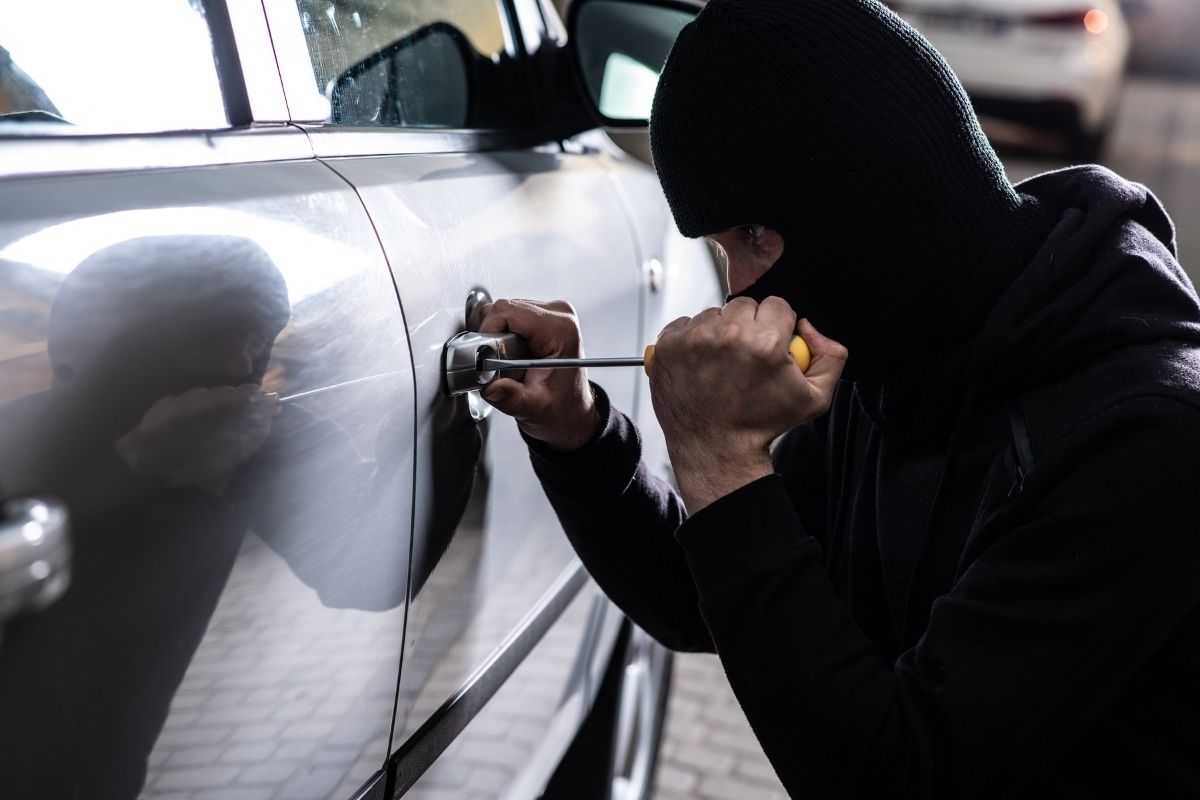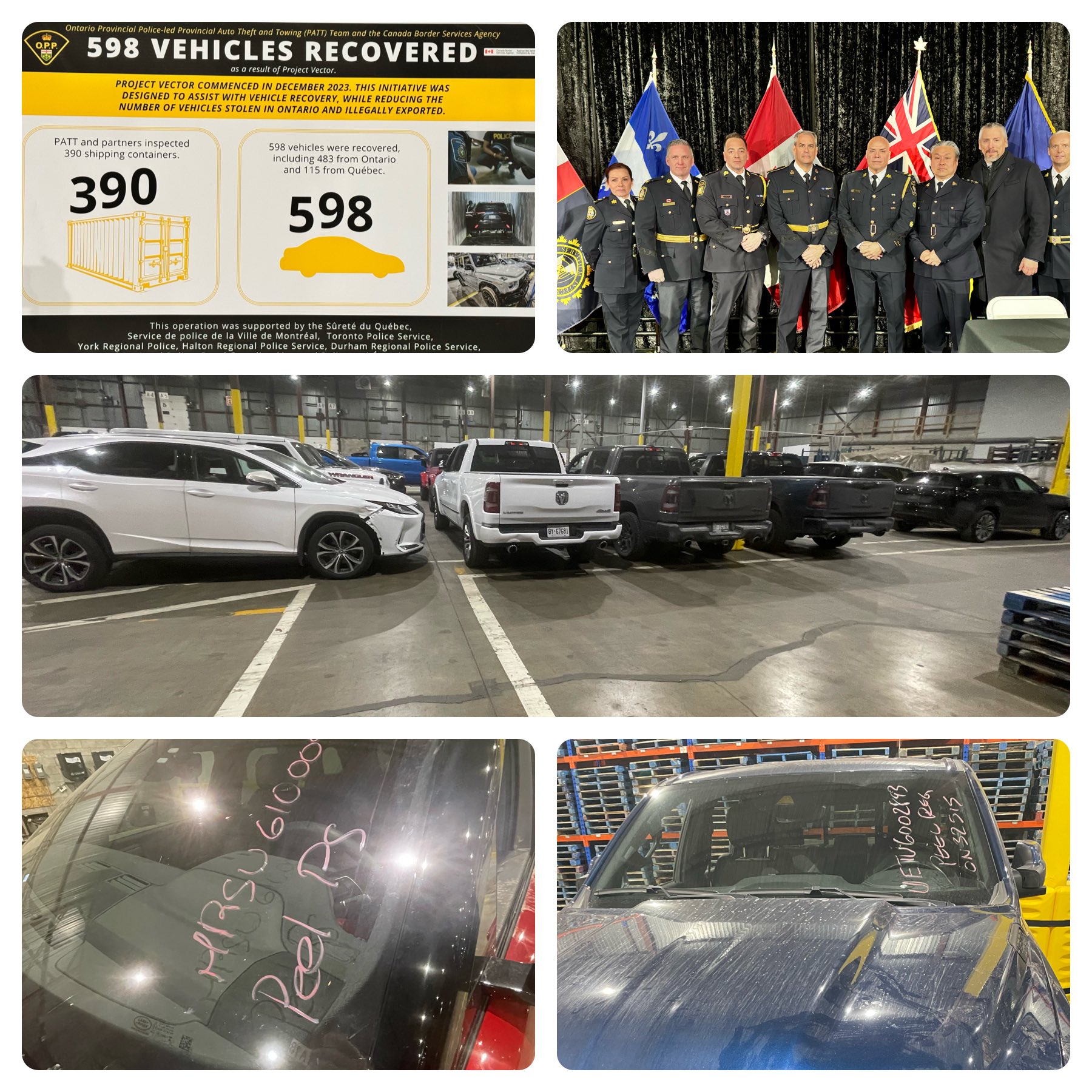Auto theft spike has police from Mississauga to Montreal offering tips and looking for answers
Published April 12, 2024 at 3:53 pm

The bad news for owners of high-end vehicles in the GTA is the area is the number one target for thieves in the country. But thanks to a multi-jurisdiction police initiative dubbed ‘Project Vector,” investigators are making headway in the war on auto theft.
The project, headed up by the OPP and the Canada Border Services Agency (with representation from more than a dozen police forces, including Durham Police), followed up on tips and opened nearly 400 shipping containers at the Port of Montreal between December and March, recovering 598 vehicles valued at $34.5 million.
Most of the stolen cars are headed overseas to resale markets in Asia, Europe, Africa, the Middle East and South America and nearly three-quarters of the recovered vehicles came from the GTA, including 215 from Toronto, 125 from Peel, 58 from York Region, 19 from Halton and 15 from Durham.
Organized criminal organizations – both local and international – are behind most of the thefts and Durham Police Deputy Chief Dean Bertrim, who was at the April 3 Project Vector press conference in Montreal, said there are at least 78 organized crime groups involved in vehicle thefts in Canada.
“These crimes are orchestrated by larger organized crime groups which use smaller criminal groups and persons to facilitate the thefts and transportation of the stolen vehicles to ports and borders,” Bertrim explained, adding that there is a “strong possibility and belief that at a high level these thefts are either directly or indirectly funding terrorism and high-level crime,” such as human, drug and weapon trafficking.
“Definitely the massive spike (in auto thefts) is connected to organized crime and it feeds into international organized crime and terrorism. Preventing this revenue stream dampens funding for other criminal industries.”

Durham Deputy Chief Dean Bertrim
Bertrim also offered some tips to keep your vehicle from ending up in the hands of organized criminals, starting with a “layered,” multi-pronged auto prevention approach.
“The first layer of auto theft prevention,” Bertrim said, involves simple steps such as parking in your garage, keeping your vehicle in a well-lit area, parking your high-end vehicle in front of other vehicles in a driveway (if possible) and using security cameras as a “deterrent.”
Ensuring the windows and doors to the vehicle area always locked and keeping keys away from the front door are also important, as well as the obvious: “Do not leave your vehicle running with the keys inside.”
The second layer of auto theft prevention, he said, involves more “active steps” including steering wheel lock systems, pedal locks, and port locks to prevent vehicle computer hacking.
The third layer of auto theft prevention uses after market installations such as an immobilizer (to prevent the engine from starting when engaged), simple tracking systems (Apple or Samsung tags) and immersive tracking services.
Some of these steps involved spending a bit of cash but if you own a vehicle worth $100,000 or more that is considerable desirable by thieves, they are steps than can easily earn their keep, he noted.
Continual education and support from the community is also important to help thwart auto thefts, he added, and Durham Police has partnered with General Motors and Équité Association to create a platform to help “disrupt” auto thefts in the region.
Governments, particularly the federal government, and the judicial system should also play a role in stopping the stolen vehicles from making it overseas:
- More collaboration and cooperation between auto industry leaders, suppliers and police services
- Tougher sentences on organized crimes and the perpetrators of auto theft by moving away from ‘catch and release’
- More police units specifically geared toward the investigation and dismantling of auto theft organizations, such as Project Vector, the Provincial Car Jacking Task Force and Durham’s own Project Attire.
- Increased funding for patrolling high risk areas, borders, and ports (on February 21 Ottawa announced $9.1 million in funding to fight organized crime)
- More inter-agency collaboration and sharing of resources
Bertrim also cited another federal fund that delivers $3.5 million for enhanced information sharing and investigative tactics to identify and retrieve stolen vehicles around the world through an Interpol project, as well as the recent GTA Auto Summit hosted by Peel Police in March.
Those collaborations, he said, help “stop the root cause at the large organized crime level before it trickles down to smaller criminal groups.”
With all that, a vehicle is stolen every five minutes in Ontario and some 1.5 million shipping containers pass through the port of Montreal every year, so police and border agents are fighting an uphill battle.
Baby steps, said OPP Deputy Commissioner Marty Kearns at the Montreal press conference. “Project Vector has disrupted the criminal networks that take advantage of the Canadian export market to sell stolen vehicles,” explained Kearns.
Durham Police Chief Peter Moreira is also optimistic. “Durham Regional Police is proud to assist our partner agencies in combatting vehicle theft across our region and our province as part of Project Vector. This announcement is the latest development in what is our ongoing work to tackle this serious problem.”
More than $1 billion in auto theft insurance claims were made in Ontario last year as the number of auto thefts has hit record highs. According to Peel Police, more than 7,660 vehicles were reported stolen in Mississauga and Brampton alone 506 in a 30-day period earlier this year – an average of 17 per day.
With files from Ryan Rumboldt










